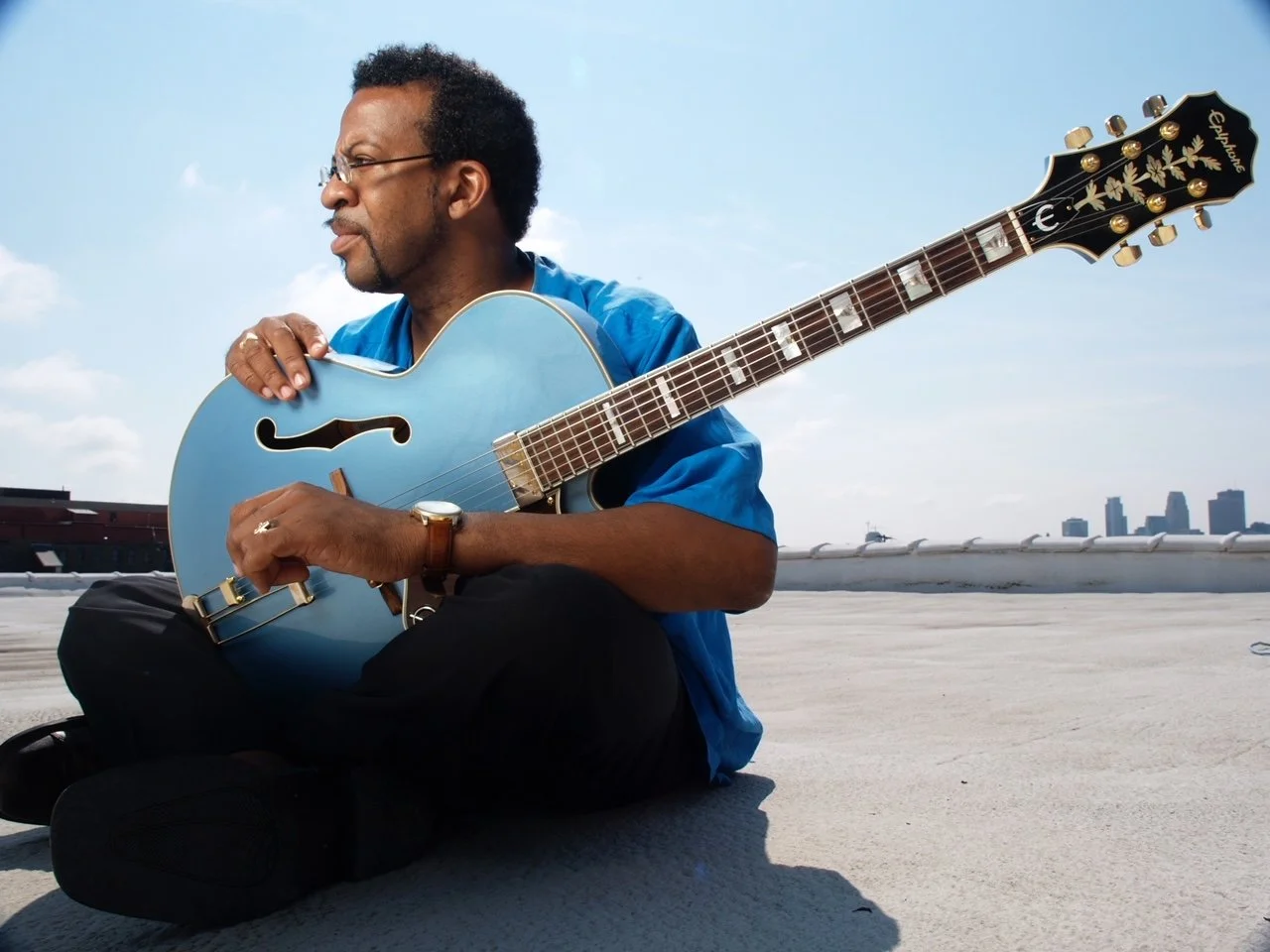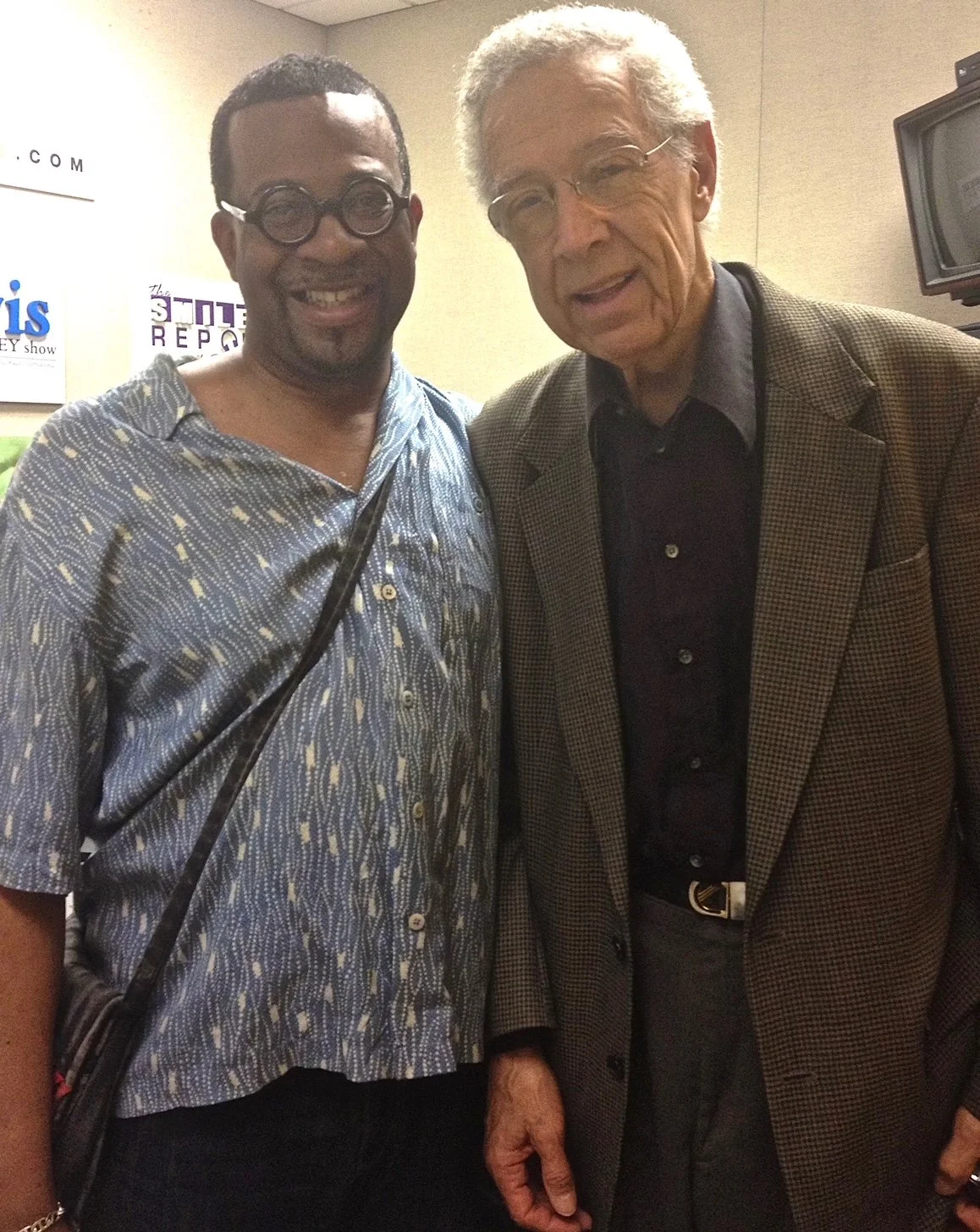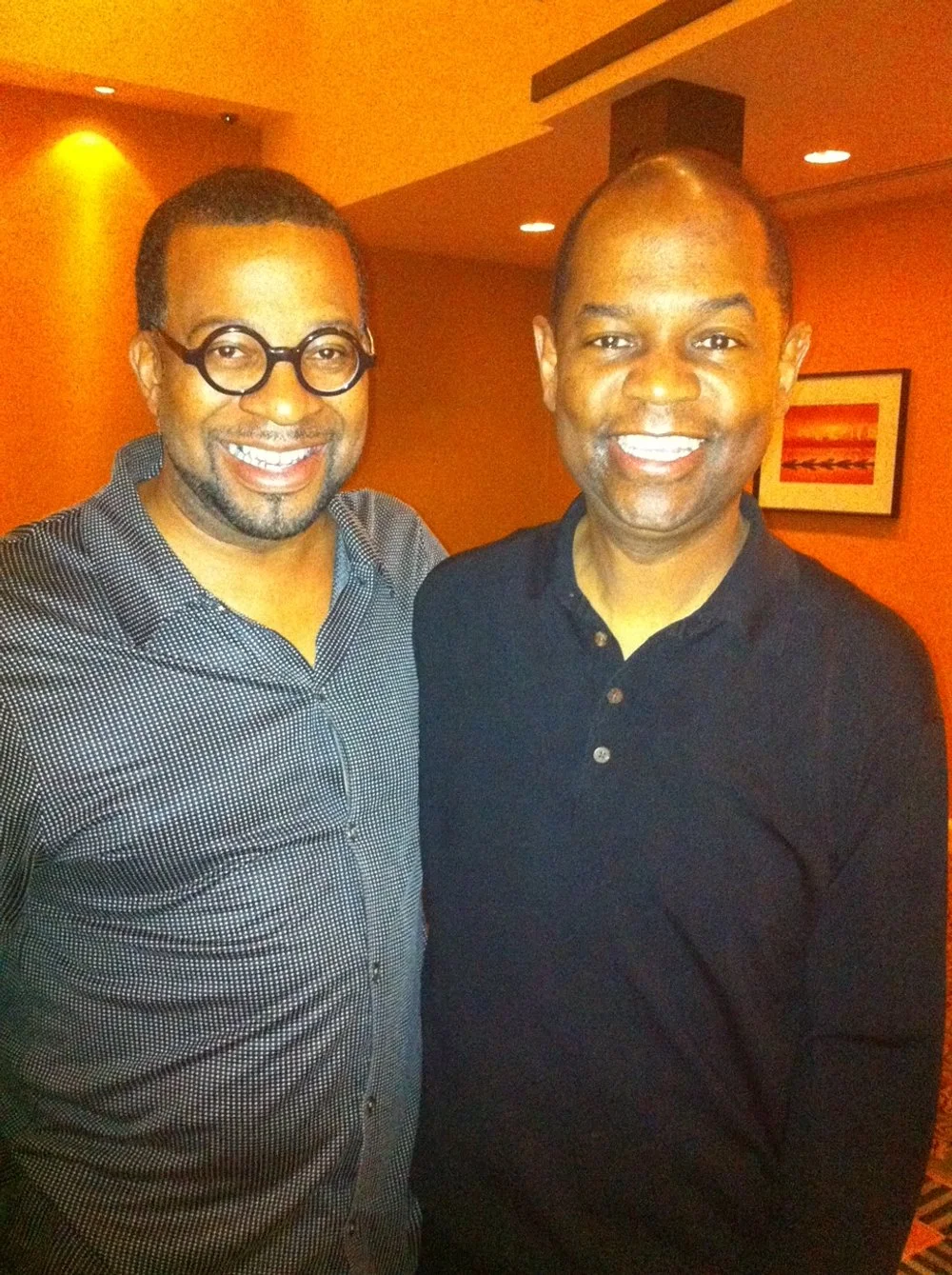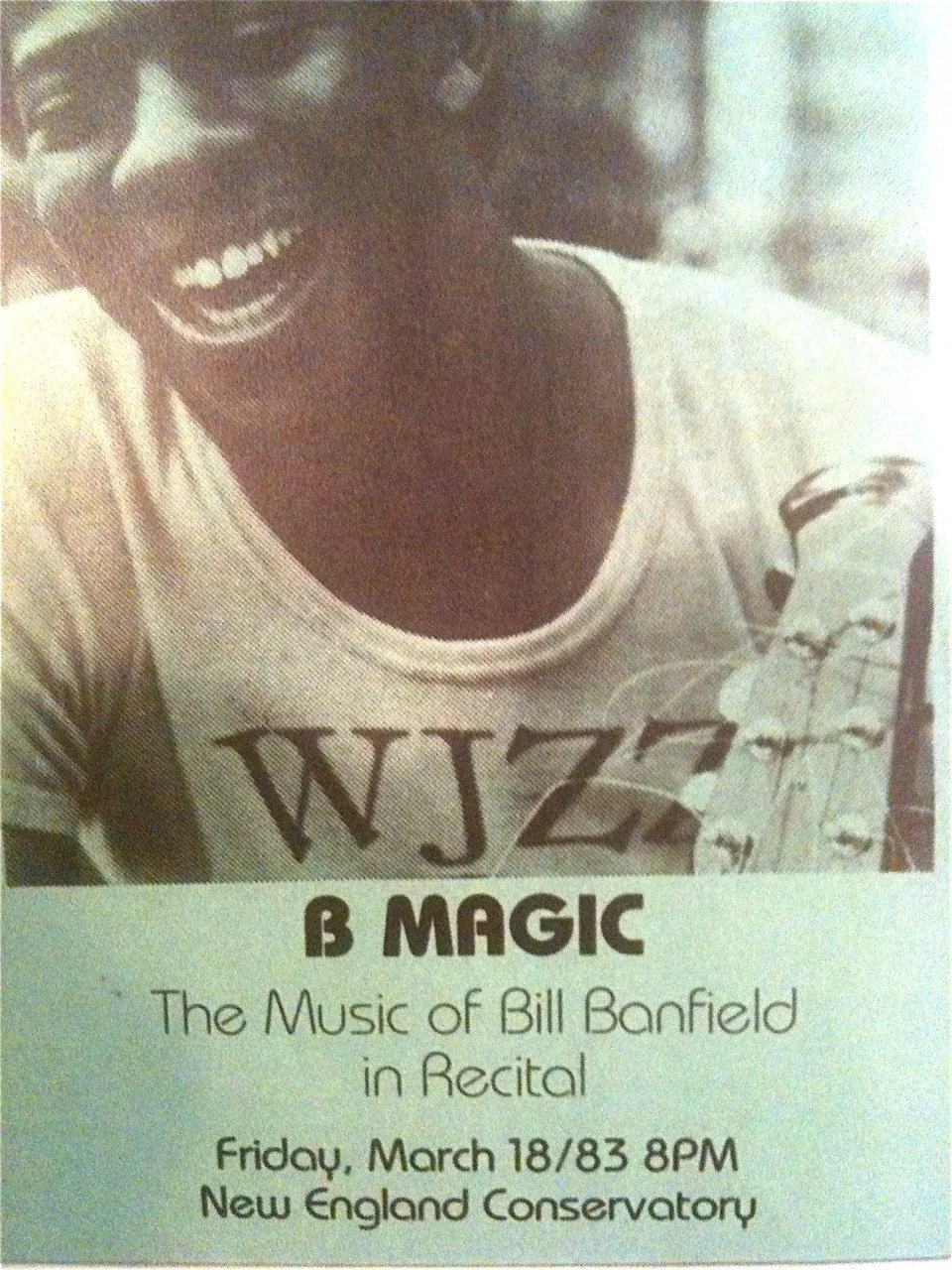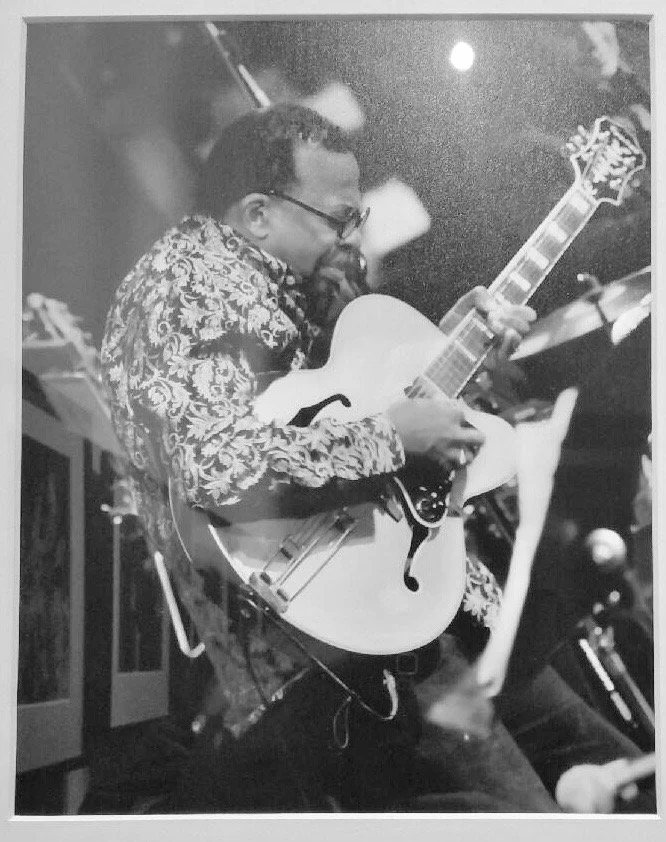Bill Banfield’s Jazz Urbane
Take Time to Listen
Available on July 19th
TAKE TIME TO LISTEN
Listening to this music without any previous knowledge in a blindfold test, you cannot help but be impressed by the guitarist. This is someone with a deep and expressive sound, the sine que non of any great musician; who maintains a rhythmic flow without the need to appear metronomic; who can express energy and tenderness in equal measure.
Learning that the guitarist in question is Bill Banfield, you may be brought up short. Bill Banfield, the composer of symphonies and operas, the conductor of the Imagine Orchestra? That Bill Banfield?
That Bill Banfield indeed. While he admits that his immersion in composing and orchestrating allowed him to drift away from the guitar for a time, Banfield realized that the instrument was what he describes as “my personal point of expression.” And so he returned to his roots and created the present stunning recital.
In Banfield’s case, those roots emerged from the soil of his native Detroit, Michigan. Not just the work and inspiration of Kenny Burrell and Earl Klugh, to whom the album is dedicated; but also to the overall Motor City experience. “My generation, whether Regina Carter or James Carter or whoever, was trained under [trumpeter] Marcus Belgrave. We also all grew up with the industrial sounds, the urban sounds and the political ethos of the city. That mix gave us a regional sound. More specifically, Kenny and Earl have both inspired and advised me over the past 30 years. Kenny even commissioned a symphony from me.”
Banfield was also molded by the explosion of black popular music in his youth, citing Michael Jackson, Prince and Ernie Eisley (“my second guitar hero after Jimi Hendrix”). As a student at the legendary Cass Technical High School, he was set on his eclectic path early. “In my first ninth grade music class,” he recalls, “our instructor began by asking us to analyze Lionel Richie’s `Three Times a Lady.’ He felt that if we could appreciate all that went into a great pop song, we could appreciate Bach. Pop music was the epicenter, and we went from there.”
What has emerged is a concept that Banfield calls hybridity. “It’s the idea of bringing eclectic styles together – pop songs, jazz standards, new standards and originals. That’s the way I develop my performances, and that’s the way the program for Take Time to Listen was conceived.”
As a performer, Banfield cites advise from two of his guitar heroes, Joe Pass and Kenny Burrell. Pass stressed that a guitarist doesn’t need a chord on every melody note, that the single line reveals the instrument’s core voice. From this premise, Banfield began to view his playing as what he refers to as “solo voice guitar.”
Equally important was Burrell’s admonition, “Don’t worry about competing with a solo piano. You’re a guitar player.” Banfield elaborates that “Pianists release pounds of pressure with every note they strike, and a guitarist can’t compete with that.” The energy remains, but it emerges organically.
As a program of music, Take Time to Listen makes an excellent case for hybridity. There are standards old and in the making, songs associated with jazz and pop, plus six original compositions. While some, like “Autumn Leaves,” sustain an infectious tempo, others like “Summertime” argue that feelings establish their own metabolism. Earl Klugh’s “Mirabella” has a beautifully controlled ebb and flow, while “Some Day My Prince Will Come” and the Isleys’ “For the Love of You”” contain more unpredictably kinetic improvisations.
As expected, Banfield the composer also displays his chops, albeit in a more intimate setting than is his norm. “AM for Birdie” may be the most likely earworm of the lot, a leaping tune with sustained energy; “Brooke” and “Her Serenade” strike this listener as the most heartfelt. Tradition shines through in “Pass Me the Blues,” a display of pre-urban roots and pure expression. All six originals capture a composer and a soloist rich in ideas.
Beyond the merits of individual tracks, Take Time to Listenis a model of consistency. Each performance is the product of an artist overflowing with ideas, all contained within a concept all his own. This will not surprise those familiar with Bill Banfield the composer, the conductor, the bandleader, the educator. Add to that list Bill Banfield the guitarist.
- Bob Blumenthal
Bill Banfield, Solo Guitar
… one note, one day at a time
“Bill, create contrast and avoid sameness…” - Dave Fiuczynski
“Colorful motion is what you want… create an illusion in the texture through motion.” - Joe Pass
Artist Notes…
My hope here was to create a recording of my guitar works, just me and my guitar.
And I hope you like the music, my expressions.
I believe, like my dear friend Tuck Andress noted, that “lyrical playing” is coming from the heart of the player. And I think imagination and emotion is what makes our music matter. These recorded songs I’m workin got here are approached with what I call, “solo voiced guitar” to emphasize this sound, my sincere voice.
I’m excited to share my take on our traditions as guitarists. I wanted this to sound like a guy sitting in front of you just playing his songs on his guitar.
“… I keep being reminded how utterly compelling the unaccompanied single line is when it comes out of the heart and mouth of a great singer. The challenge on instruments is to breathe enough life and humanity into the unaccompanied line to move in this direction, and it is by all means a challenge. Different instruments have different idiomatic devices available for this, as the needs of rhythmic playing and lyrical playing are different, but it is well worth taking seriously, because of course we all want to effect people viscerally, emotionally and/or spiritually as well as intellectually. To do so requires some digging in!…” - Tuck Andress, on Bill Banfield’s solo voiced guitar projects
Guitar Songs
When an instrument has been in your hands, your ears, your mind and soul, for fifty years and when the music inside those 50 years hits you, you respond and create, you have to come out, hybrid. Hybridity is a term being used these days to evoke the idea of multiple, mixed approaches. Hybridity for me is framed in just those aims; eclectic, progression of multicategoricual approaches that have defined my work compositionally from my symphonies, operas to contemporary jazz compositions.
My mentor Kenny Burrell, told me a few years ago in approaching my solo guitar, to try not to compete with what pianists do. The very weight and mechanics of a piano hammer and the thickness of piano strings and number of them, make this incomparable. But he suggested I think of guitar as guitar, let it speak as it speaks, in other words how I experience the instrument. There is a difference I’m learning between playing the guitar, and speaking through the guitar.
While that may seem as a given, I was always envious of the free terrain of expressive-ness a pianist had. Two hands allowed solo and accompaniment simultaneously. That really got me thinking. I thought about a number of my own song arrangements and originals that I would learn and play more deeply, being able to clearly play the melody and accompany with sonorities as I could fit them in.
And I’d hope this ideal would allow me to drop my inhibitions and be free of approach formulas and conventions of any kind and, just play.
As a solo jazz soloist I wanted my music to more freely create the spaces that allow me to feel like an explorer in music, a poet of notes who is interested in telling a narrative in a compelling new way.
I discovered in this way of thinking about this, that once the chord was introduced in the air and the rhythm of the song was introduced, you already “started the on-button” for the playing what’s in your head/ears with an auto-rhythm section.
So if you drop in a bass note/line every few bars, you don’t really have to continue that rhythmic/chord counter-point, ump-pah, ump-pah pattern, because your own ear and the audience’s ear had already been prepared with the accompanying materials. Players rarely try that with guitar because an upper solo line might appear naked, exposed. In the traditional classical guitar approaches, normally it is approached with western counterpoint accompaniment where the lead top line is always supported with functional regulated lines (bass, chord).
Here’s my own continuation from classical guitar and jazz guitar ie., Joe Pass. Once the solo improvisatory free sections begin, I more than occasionally completely drop the chords/bass motion function regulating support parts, and blow solo voice freely now on top leaving the only thing the audience is hearing is pure solo line, “the unaccompanied single line”.
Joe Pass was my model forward here.
He said, “… you don’t need a chord on every melody note that you play. You’re killing yourself for no reason. ‘Cause when you play a chord, the sound is there, …it’s heard by the audience. It’s all heard, and the harmonies stay. The object of solo guitar is to make music, not hard work. You want to be free to be able to play, not to make hard work. Colorful motion is what you want… create an illusion in the texture through motion.”
My living here was Earl Klugh from Detroit, who was the first “star” I met who encouraged me to become a professional in my music goals as a guitarist. I was 18 headed off to Boston to study with Mick Goodrick at the New England Conservatory.
Klugh’s mastery, his sincerity of soul and his friendship has shaped me.
Here are some of the most influential guitarists of our times and several were teachers, all have mentored or encouraged me over the years, or I’ve played with them and whom I consult with on music:
Jack Wilkins ~ John Scofield ~ Kevin Eubanks ~ George Benson ~ Emily Remler ~ BB King ~ Pat Martino ~ Lee Ritenour ~ Lionel Louke ~ Pat Metheny ~ Ernie Isley
Following Kenny Burrell and Earl Klugh, I am after and of them, from Detroit in that known line of players from our city soil. This has been a kind of way for me to see and figure out my own paths as a guitarist, and again, Kenny shaped specifically the development of this recording. Early on, Earl came over to my home to play duets, and more recently Kenny commissioned me to write an orchestral work for his 80th birthday. Lee Ritenour accompanied me to its LA premiere. Recently I interviewed and have published, “Living Rock and Roll” about my dear friend, big brother Ernie Isley on Smithsonian Press. So this is honestly for me about real relationships among living guitarists.
Equally important to me as all is the rich well of songs from the era I grew up being soaked in great music. so in this collection I have; You’ve Got a Friend (C.King), Closer I Get to You (Donny Hathaway, Roberta Flack), Your Song (Elton John), This Time and, Mirabella (Earl Klugh), Fragile (Sting).
I as well wanted to bring to these songs my sense as a composer, and arranger in terms of orchestration again blended with my improvising voice locked in a groove pocket where possible. Most of these are one take, “solo voiced” non punched guitar performances, and in some cases we decided to blend myself playing duet with myself.
As a collection of music-song works, the “solo voiced” guitar model takes its example from Thelonious Monk’s solo piano pieces, clearly his “compositional and piano identity voice” is unmistakably him at once.
The recording as I approach it is a little bit of Earl Klugh, threaded jazz traditions, concert guitar, Blues, Detroit R&B funky, Mexican/Cuban/Flamingo, Caribbean influences, popular songs, pour in a whole lot of me, put it in an arts blender = my guitar approach in a way I hope is appreciated here.
I hope I have created a market radio ready and creatively attractive recording, that is unique, distinctive and palatable. In my mind, it draws from jazz, popular, classical and folk repertoire and approaches.
Dedicated to Earl Klugh, Kenny Burrel, this homage lifts up these jazz guitar icons who greatly inspired and coached me as an early teen aspiring to be like my heroes.
I also hoped that the recording sounded close to what I pictured in my head, sounding natural, with all the imperfections, heavy breathing, hands missing and slapping the side of the instrument and all in my own voice trying to keep time and tune the best way I can. It’s never a safe or settled territory yet. Maybe that’s the “next grown up record”. It’s tender, vulnerable yet demanding we listen out with it. It’s bluesy, funky, sonorous and abstract, it’s jazzy and classically woven, it sings, cries, and proclaims its time to be whatever it wants to be while asking us to just sit and listen so we can hopefully like it.
That’s my hope any way, the core idea of it is a “solo voiced” guitar album to share my sincere soul, my songs and a music that I hope people can love. That’s my goal. I’m seeing these guitar pieces more as a conversation, a natural extension of my brain speaking through my hands…flowing as my thoughts, speech, free expression. Trying in my own way to contribute to a definable guitar song repertoire.
Hope you enjoy…
- Bill
“…Bill Banfield’s delightful and fresh take is cool, retro, 70s jazz, funk and soul mixed with today’s interpreting on the tunes! Along with his guitar playing and overall musical abilities… an exciting new record! Check it out… you won’t be disappointed!…” - Lee Ritenour
“…When you get drawn into Bill’s improvisational universe it’s always about a surprise or unexpected move around every corner. He possesses his own harmonic language and navigates musical forms in a way that brings Picasso’s cubism to mind. Yes… there is a linear nature to things… but there is also the possibility that forms can be rearranged in the moment.” - Larry Koonse
“Bill Banfield’s solo guitar project is like an impressionistic tapestry weaving beautiful melodies and lush harmonies together freely. He takes us down a path with unexpected turns, sometimes abstract and always soulful.” - Freddie Bryant
All arrangements by Bill Banfield
Original compositions, as BB
This Time
Autumn Leaves
AM Song for Birdie (BB)
You’ve Got a Friend
Mirabella
Fragile
Summertime
Your Song
Song for Earl (BB)
Her Embrace (BB)
Your Serenade (BB)
Closer I Get to You (BB)
Pass Me the Blues (BB)
On the Other Side (BB)
That’s All I Needed (BB)
Variations and Fantasy on the Theme of Someday My Prince Will Come
My love and thanks to my ideas collaborators and guitar coaches, Tuck and Patty, Kim Perlak, for walking with me from health restore to here. Love you.
Produced by Bill Banfield
Engineering by John Escobar - Huge thanks John, here it is!
Art design by Rainer Gembalczyk, Sienna Digital
Critical Reviews on Bill Banfield
“…Bill Banfield’s delightful and fresh take is cool, retro, 70s jazz, funk and soul mixed with today’s interpreting on these tunes. Along with his guitar playing and overall musical abilities… you won’t be disappointed!” - Lee Ritenour, guitarist
“My dear brother Bill, thank you for adding to the right legacy of solo guitar. Your warmth, story like journey through sound ideas, a music calling. Here, listen and enjoy the horizon of songs and strings and things, embrace!” - Kevin Eubanks, guitarist
“Bill Banfield plays with an excellent combination of feeling and skill. This combination of songs and melodies is bound to be discovered and rediscovered by any lover of music. I congratulate Bill on his work.” - Ernie Isley, guitarist
“Bill takes us on a beautiful sonic journey through a varied and well thought out set of classics, peppered with some surprising harmonic twists and turns, all while keeping his soulful propulsion moving throughout. The art of solo guitar is in good hands, congratulations Bill on this special project!!!” - David Gilmore, professor, Guitar Dept., Berklee Global Jazz Institue
“When you get drawn into Bill’s improvisational universe it’s always about a surprise or unexpected move around every corner. He possesses his own harmonic language and navigates musical forms in a way that brings Picasso’s cubism to mind. Yes… there is a linear nature to things… but there is also the possibility that forms can be rearranged in the moment.” - Larry Koonse, guitarist
“Bill Banfield’s solo guitar project is like an impressionistic tapestry weaving beautiful melodies and lush harmonies together freely. He takes us down a path with unexpected turns, sometimes abstract and always soulful.” - Freddie Bryant, guitarist
“There is a grandeur in this new of fine art, with its many powers sparked by an inspired imagining. Banfield’s work transforms the fixed laws of musical gravity, giving rise to a new level of emotional depth and musical storytelling… spurred by a compassionate heart and fueled by ingenious creativity, the evolution of these boundless forms are most beautiful and extraordinary.” - Stevan Pasero, classical guitarist/composer, fonder, SUGO MUSIC GROUP
“…I keep being reminded how utterly compelling the unaccompanied single line is when it comes out of the heart and mouth of a great singer. The challenge on instruments is to breathe enough life and humanity into the unaccompanied line to move in this direction, and it is by all means a challenge. Different instruments have different idiomatic devices available for this, as the needs of rhythmic playing and lyrical playing are different, but it is well worth taking seriously, because of course we all want to effect people viscerally, emotionally and/or spiritually as well as intellectually. To do so requires some digging in!…” - Tuck Andress, on Bill Banfield’s solo voiced guitar projects
“…Banfield is a guitar player who understands the power of his instrument to create improvisational heat and lyrical glow. Banfield is a player who communicates. Those known best for their writing are often disparaged when they pick up an instrument, accused in jazz parlance of playing “arranger’s piano”. Banfield, in contrast, plays what we might call composer’s guitar, an approach in which ideas with melodic content and forward-springing suggestion trump self-contained technical exercises… Bill Banfield has the musical wingspan and is confident in both concert hall and jam session, at home and ease whether committing his inspiration to manuscript or expressing it in the moment. He writes in a similar spirit, allowing his themes to resonate and grow. Banfield’s perspective on jazz allows for stretching and grooving, and music by two of his idols, Wes Montgomery and John Coltrane, fits snugly among his own creations while receiving distinct interpretations… Much like a Cubist portrait, his work provides multiple perspectives and reveals highlights and shadows, without disrupting the integrity of the overall form.” - Bob Blumenthal


